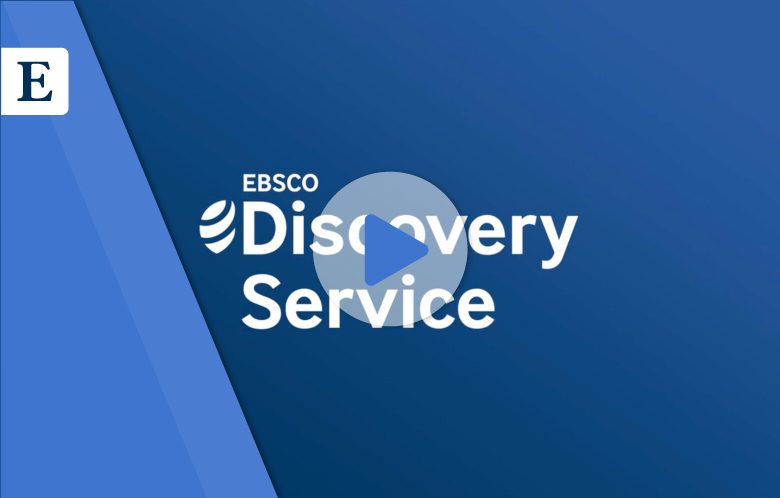Transcript | Download
Discover the Importance of Foundational Data in EBSCO FOLIO ERM
Hello. Welcome to FOLIO in 5. My name is Richard Burkitt, Director of Innovation at EBSCO. In today's session, we're going to look at the importance of high quality foundational metadata in electronic resource management. Why foundational? If the underlying data is poor, then how can you expect to accurately manage the electronic resource lifecycle within your ERM system? So knowing with accuracy what titles, packages, and providers form the corpus of your electronic resource collection is very important indeed. To achieve success, you need to have a trusted source of metadata. Welcome to the EBSCO Global Knowledgebase. With the inclusion of metadata from around 2400 content providers, you can be sure that the data is comprehensive. With EBSCO’s long-standing curatorial processes, you know you can trust it to be accurate as well. Here we see that foundational nature of the EBSCO Global Knowledgebase and its relationship with the applications within FOLIO that manage the electronic resource workflows. Notice that the same data also powers EBSCO Discovery Service and the EBSCO Link Resolver. Let's take a look at how that data works in action. Welcome to my FOLIO demonstration environment. We can see here that we have a series of applications. In order to use the EBSCO Global Knowledgebase, we need to go to eHoldings and click on this app. This shows that we have a hierarchy of information that is available to bring into our FOLIO ERM. This is provider, package and title level metadata. So if we select Title and we choose ‘tetrahedron’, then I'm now interrogating the EBSCO Knowledgebase for all of those titles that include tetrahedron. Should I select the top journal here, then we can see we've got information which is brought in from the EBSCO Global Knowledgebase around maybe alternative titles, publishers, subjects associated with this, is the title peer reviewed and any ISSN numbers associated with this. We can also see that this title is managed. That means that we have the title associated with a package held within the ERM system. Scrolling down, we can find that this is through the Elsevier WKC package, but other packages also contain this particular title. And if we wanted to select one of these, then we can go through and make this package part of our collection as well. If we want to have a look at a package, then I can go in and I can search for a package which is often used within libraries. And we can see here that this particular demo environment has got ABI/Inform selected with multiple packages. If we wish to go through, have a look at a particular variety of the ABI/Inform package, then we can do exactly that. And if I wanted to add this to my holdings, then I would simply click the blue button to add this to my holdings. And that’s now, as a package, part of my managed collections. I can scroll down and I can see that the title list for this particular package can come through, and there's 8,280 records, which are part of that knowledgebase record. All of the green squares indicate that this is part of the collection, which is managed. If I want to go and have a look at a provider, then I can go and have a look at a provider such as BioMed Central. So this works not just with commercially available packages, but also open access packages as well. We can see that if we wanted to add this BioMed Central package to our holdings, then we can do exactly that. We see by scrolling through the title list that none of these appear to be managed through our ERM at the moment, but adding using the blue button, it becomes very simple to use the power of the EBSCO Global Knowledgebase within your FOLIO ERM environment.


